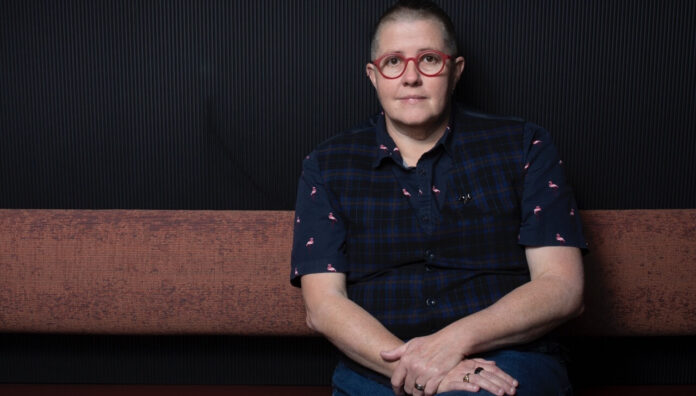As new pharmacist prescribing pilots and models continue to be introduced, here’s how to cut through the noise to understand the history of prescribing, where it’s headed and how to get involved.
So far, this year has proven to be a big one for pharmacist prescribing. A Victorian pharmacist prescribing program is due to commence in October 2023, and others expected to be announced in various jurisdictions, such as Western Australia, by year’s end.
Just last week (12 July) a South Australian pharmacist prescribing trial was announced, allowing hospital pharmacists to prescribe medicines as part of care teams.
Under the trial, pharmacists at Lyell McEwin Hospital credentialed by the Chief Medical Officer will be able to prescribe selected Prescription Only Medicines, including those for blood pressure, cholesterol, pain relief and diabetes, in a partnered model with doctors.
Meanwhile, the NSW pharmacist prescribing pilot recently scaled up 10-fold, with 1,000 community pharmacies across the state set to offer the service, with a continued oral contraceptive pill (OCP) service due to kick in later this year.
NSW Health Minister Ryan Park recently announced 500 women had already been treated under the pilot from mid-May until the end of June.
As this evolution continues to unfold, it’s more pertinent than ever for pharmacists to have a handle on all things prescribing.
‘Pharmacists have been prescribing for decades and decades’
To bring pharmacists up to speed on prescribing, scope of practice expert Professor Lisa Nissen – Program Director for Health Workforce Optimisation, Centre for Business and Economics of Health, University of Queensland – is heading two sessions at PSA23, to be held from 28–30 July in Sydney.
‘There are heaps of opportunities across different states for scope of practice expansion,’ she said.
While the Urinary Tract Infection Pharmacy Pilot in Queensland provided ‘real insight into how pharmacists could expand their contributions around prescription medicines’, pharmacists have long worked in the prescribing space through:
- recommending Schedule 2 and other non-prescription medicines, along with non-drug treatments
- authorising supply of Pharmacist Only Medicines
- deciding whether medicines are appropriate for patients or not
- reviewing the effectiveness of medicines and suggesting alternatives
- Authorising pharmacist-administration of vaccines
- emergency supply of Prescription Only Medicines and Continued Dispensing of medicines.
‘Pharmacists have been prescribing for decades and decades. We just haven’t really called it prescribing,’ added Prof Nissen.
The PSA23 Prescription for the Future session will give pharmacists a chance to find their ‘inner prescriber’, while shedding light on future opportunities.
The session will also introduce PSA’s revised Professional Practice Standards (PSS), with an entire standard section in the rebuilt document devoted to supporting current pharmacist prescribing.
‘We’ll look at what’s happening around the different jurisdictions in Australia, the new prescribing trials running across the different states, the expanded scope studies, UTI [program] expansions into other areas, and expansion of supply of OCP,’ she said.
The all-star session will also feature:
- Hannah Knowles MPS, a pharmacist with both community and hospital experience who has gained expertise in pharmacist prescribing through her role as PSA ECP liaison with the Young Pharmacist Group of the International Pharmaceutical Federation (FIP)
- Bridgett Totterman MPS, a pharmacy services expert, who owns seven community pharmacies and is Chief Operating Officer of the White Retail Group
With Prof Nissen and Ms Knowles both part of the team that drove the new practice standards, the session will explain how the PPS will shape prescribing activities now and in the future.
‘It’s an exciting time for the profession and an opportunity for us to have a future in prescribing,’ said Prof Nissen.
What’s happening overseas?
As advances in prescribing continue, it’s natural to look at the models of care in other jurisdictions and countries which may be considered further ahead.
The PSA23 session on International Pharmacist Prescribing is designed to be a ‘myth buster’ that breaks down how these different models actually work, said Prof Nissen, who will co-present the session with PSA’s new CEO Adjunct Associate Professor Steve Morris and Former Deputy Chief Pharmaceutical Officer at NHS England, Professor Bruce Warner, who brings a wealth of knowledge about the strategic and operational development of medicines and pharmacy policy.
‘That way, people can understand what’s happening in the prescribing pilots in NSW and Queensland, such as the North Queensland Community Pharmacy Scope of Practice Pilot,’ said Prof Nissen.
‘And when people say [pharmacists] are prescribing in the UK and Canada, what does that really mean? Not all pharmacists prescribe in Canada, which is a federation like Australia, so there are different prescribing [models and regulations] across the country.’
The session will also help pharmacists understand what prescribing is and isn’t, the different ways people use prescribing as a tool for patient practice, and what pharmacists overseas are prescribing.
‘It’ll give us a bit more of an understanding about the evidence in other countries and how we’ve been able to use that in things like vaccination and UTI [pilots] to show that pharmacists can contribute in the prescribing space in Australia,’ she said.
‘So come along, check out the sessions and see what the myths and non-myths are around prescribing.’
Don’t miss your chance to register for PSA23, and attend three action-packed days filled with clinical and practice updates, networking events, and everything you need to know about pharmacist prescribing.



 John Jones MPS, pharmacist immuniser and owner of My Community Pharmacy Shortland in Newcastle, NSW[/caption]
John Jones MPS, pharmacist immuniser and owner of My Community Pharmacy Shortland in Newcastle, NSW[/caption]


 Debbie Rigby FPS explaining how to correctly use different inhaler devices[/caption]
Debbie Rigby FPS explaining how to correctly use different inhaler devices[/caption]




 Professor Sepehr Shakib[/caption]
Professor Sepehr Shakib[/caption]

 Lee McLennan MPS[/caption]
Lee McLennan MPS[/caption]
 Dr Natalie Soulsby FPS, Adv Prac Pharm[/caption]
Dr Natalie Soulsby FPS, Adv Prac Pharm[/caption]
 Joanne Gross MPS[/caption]
Joanne Gross MPS[/caption]





